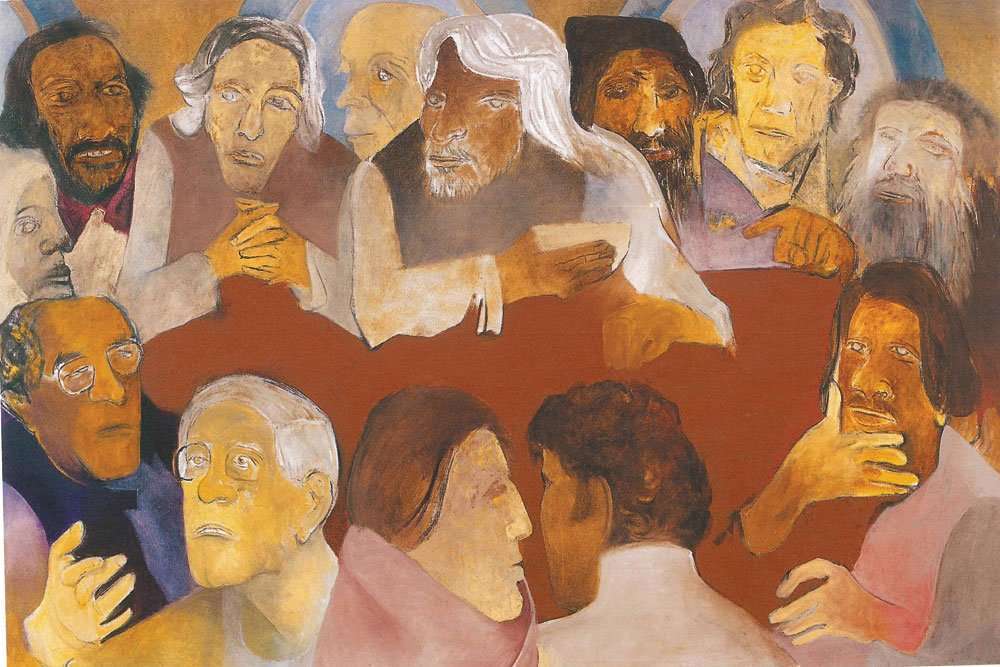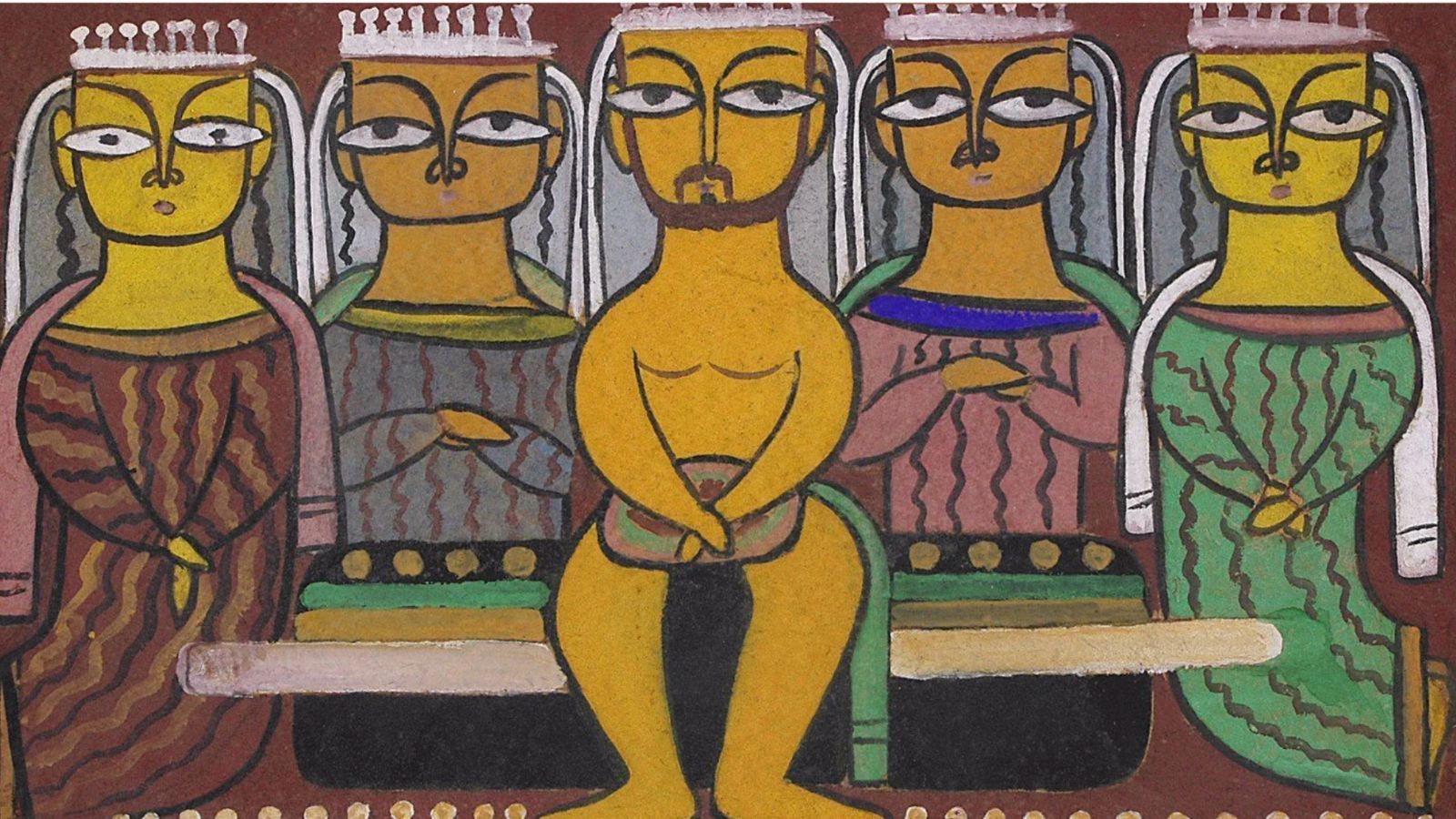The Last Supper: The India edition
Editor’s note: Leonardo Da Vinci’s painting of Jesus dining with his disciples is the most famous example of Christian art. The work has been reinterpreted by countless artists around the world—including India. This Heritage Lab rounds up the best of them—by Jamini Roy, MF Husain and more—as is fitting for Easter.
The piece was first published on The Heritage Lab—a wonderful resource of stories on cultural heritage, art, museums and lots more. You can find other wonderful essays on art and culture over at their website.
Community, betrayal, sacrifice, friendship, and love: all themes come alive in the iconic ‘The Last Supper’ painting by Leonardo Da Vinci. ‘The Last Supper’ painting features Jesus and his apostles seated around a table, sharing a final meal before Christ was arrested and crucified. In what is known as the “world’s most recognisable painting”, Da Vinci captures the moment when Christ foretells his betrayal evoking a range of emotions from all those who are present. There is shock, rage, guilt—and a sea of emotions in the scene.

It is the enduring appeal of the subject that has inspired generations of artists across cultures—including in India!
The tradition of ‘Indian’izing Christian themes in art is not new. But unlike Mughal artists, modern artists responded to the theme of the Last Supper by interpreting it as an expression of personal experiences and style.
The Last Supper by Jamini Roy
Jamini Roy was amidst the nine jewels of Indian modern art. Throughout the 1930s he worked on several Christian-themed paintings, including versions of The Last Supper. All his paintings feature Christ and the apostles in profile, with the almond-shaped eyes and elongated bodies in keeping with Roy’s signature style. The symmetrical arrangement of figures and colour scheme in this painting are reminiscent of the Bengal folk art style, which inspired Jamini Roy. The artist also replaces the large table in Da Vinci’s painting, with smaller stools for each apostle with a careful arrangement of bowls and glasses.

The Last Supper by Madhvi Parekh
Madhvi Parekh is recognised as one of the most significant Indian artists today. With no formal education in art, she is known for her works rooted in tradition and folk stories. In 2010, Parekh had the opportunity to see Leonardo Da Vinci’s masterpiece in Milan (Italy). Inspired by it, and influenced by her experience of the Holocaust Museum, she presented her own version of The Last Supper. For this massive 20ft version, she employed the reverse-painting technique on acrylic sheet. Her vibrant painting thus, hints at the stained glass paintings in the churches of Europe.

Here’s a look at a limited edition serigraph from the DAG collection.

The Last Supper in the Red Desert by MF Husain
MF Husain has been known for assimilating his multi-cultural experiences and learning on canvas. This painting (2008) represents his profound take on an iconic Biblical story and is among his most significant works (from the later period of his life). The painting while drawing on connections between Christianity and the Islamic culture (the camel in the painting points to an Arab view) also highlight the element of “betrayal”. Of course, this part is well-known to Husain who depicts the emotion through the placement of empty bowls. For a deeper reading, take a look at the essay, ‘Decoding MF Husain, as a muslim painter in exile‘.

The Last Supper by Krishen Khanna
Krishen Khanna first attempted to paint ‘The Last Supper’ aged 7 when his father introduced him to the painting by way of a postcard. Decades later, Khanna’s Last Supper moved away from the rectangular table into a huddle sans supper. Art Historian (and his niece) Gayatri Sinha points to the possible identity of the men in this painting:
Their rough handspun clothing, largely unstitched in the manner of Indian farmers or poor labourers, their heavy features and limbs identify them as working-class men…

Interestingly, Krishen Khanna worked on yet another painting alluding to the subject and titled it ‘The Last Bite’. The essence of this table though was the camaraderie as well as debates & discourses amidst artists. This was an ode to his friends — MF Husain, Souza, Tyeb Mehta, VS Gaitonde, Manjit Bawa, Jagdish Swaminathan, Bhupen Khakhar — who feature in this painting (amidst others). Khanna also includes Bhanu Athaiya — the only female member of the Progressive Artists Group. Can you try and identify them?

The Last Supper by FN Souza
Souza was amidst the first Indian artists to be recognized internationally. In his 1990 interpretation of ‘The Last Supper,’ except for Jesus, everyone else is treated with Souza’s characteristic facial distortion. At first look, this composition might not appeal to a viewer—but then, one thinks about the biblical episode, and the instance that Da Vinci had tried to capture. In retrospect, Da Vinci’s composition might appear static (and planned); Souza’s composition on the other hand has a modern day photographer’s capture—when all the subjects—dismayed, raged, shocked—are in motion, they will appear distorted, and the focus i.e. Christ appears even stronger. The red and yellow colour scheme adds to the drama of the scene.



 souk picks
souk picks